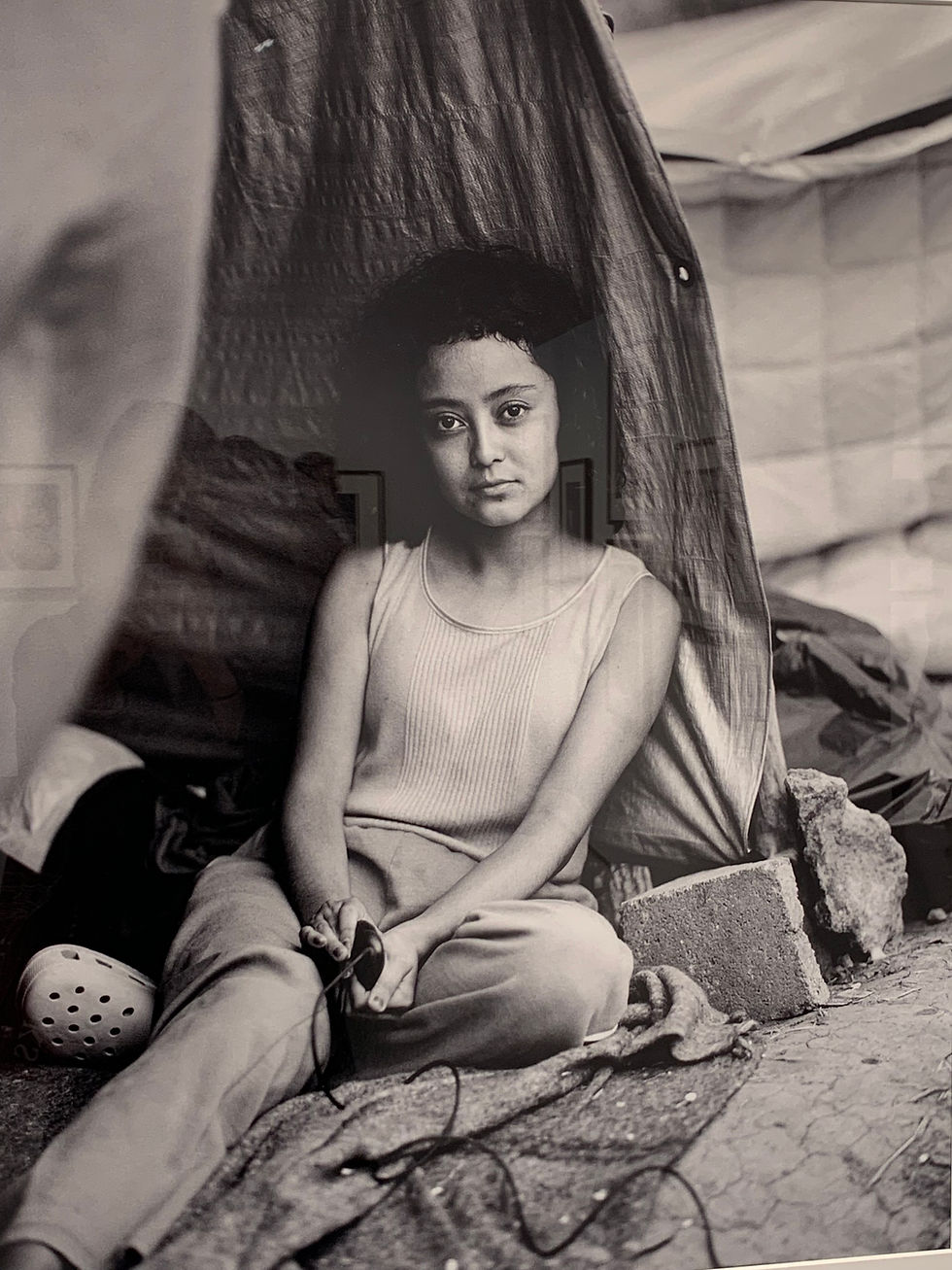What makes a Portrait?
- Caroline

- Nov 12, 2022
- 4 min read
"It's all about the eyes, they must be in focus". These were the words ringing in my ears, the words of the instructor and portrait photographer I met on a recent course. She taught me to think about both the technical aspects of a photo and the emotional. Standing before a photograph there are a number of questions you can ask yourself - where is the light coming from and what is the nature of it? What is this photo trying to tell me? And perhaps most importantly, how do I feel?
Photographs are about light and emotion. They have their own stories to tell, a visual language of decisions to uncover, decisions made by the hands holding the camera. In the case of portraiture, it's also a conversation between the sitter and the artist.
I thought I knew what to expect walking into this exhibition: compelling faces trying to tell me something. And compelling stories I found, but through a much more diverse set of images than I anticipated. Here are portrait photographers pushing, pulling and redefining the rules of the genre. Portraits with eyes closed, faces covered and sometimes no faces at all. And yet, here was also story after story. From the dramatic: survivors of trauma, abuse and war; to the ordinary: hanging washing, scrolling on phones, embracing a loved one.

Adam Ferguson's captivating portrait of Stephanie Solano was the first to catch my eye. Stephanie,17, a refugee from Guatemala is staring down the audience from the edge of a tent in a camp in Mexico. In her hands the remote that allows her to take the image at a push of the button. For this brief moment, she is empowered and in control. A moment of serenity amongst a backdrop of chaos and uncertainty.
Left: Stephanie Solano by Adam Ferguson

Margaret Mitchell's portrait of a masked and obscured women also touched me. As part of her series on homelessness, where Margaret photographs those who don't have a permanent home in Scotland, this woman fleeing domestic abuse sits on a bed, in profile, face deliberately obscured by her hair and mask. She's moved between various short-term houses and is quoted now in the latest one: 'It's tiring - this is your life, I'm safe now but it's all limited. I don't exist anymore.' Her face and identity hidden, overshadowed by her trauma. All the while a print of Marilyn Monroe beams overhead. A sorrowful and conflicting image to witness.
Right: Name Withheld by Margaret Mitchell
Other portraits were more joyful, celebrating reunions of lovers or the LGBTQIA+ community. The first prize photographs also made me smile. Clementine Schneidermann's Laundry Day series followed her elderly neighbour in Covid-19 carrying out everyday chores. She sits in one with her sun hat covering her face, reclining in a chair in a sunny garden. In another she's hanging up her washing. It made me think fondly of my own grandma, and also is a timely reminder of enjoying the small things. Similarly, Chris Budgeon makes a point about technology in his work Orlando and Wilson - two friends who were reunited after a year apart due to the pandemic. Both sit outside, staring down at their phones.
Above: Laundry Day #2, Laundry Day #3 both by Clementine Schneidermann. Orlando and Wilson by Chris Budgeon.
The images capturing loved ones suffering from dementia were poignant, but the final two heavy hitters I wish to spotlight came from Tony Sebastian Ukpo and Cian Oba-Smith. Ukpo's works are part of his series Unidentified Black Male which 'examines the perception of black men in the context of policing, and racial prejudice in the wake of George Floyd's murder.' There are four 'characters' - Island Devil, Ghost, Hooded, and Son of Man. All four images have covered or hidden faces - they are representations of myths and lies about black men, not reflections of 'individual character'. And finally Oba-Smith's harrowing image of Rajai, a scarred topless male youth, puts London's knife violence front and centre. I couldn't bear to look and yet I also couldn't look away. I felt uncomfortable photographing Rajai's portrait so I decided not to, but it's well worth looking up or visiting the exhibition to really appreciate in person.

Above: Island Devil, Ghost, Hooded Man, Son of Man by Tony Sebastian Ukpo
The more I saw, the more I questioned: what makes a portrait? As I write this, I wonder if it's entirely the wrong question. There is no singular 'portrait', it's a genre with rules and principles and as with much about art: rules are made to be broken and principles are constantly up for debate.
Portraiture throws a spotlight on intimate moments. It reveals the mundane and the extraordinary, the best and the worst of humanity. We are invited to consider life through the eyes and experiences of another, based on a particular moment. Our own lives inevitably guide what we see and what we don't. So the next time you find yourself in front of a portrait - whose story can you see?
The Taylor Wessing Photographic Portrait Prize 2022 Exhibition, organised by the National Portrait Gallery at Cromwell Place is open until 18 December.










Comments